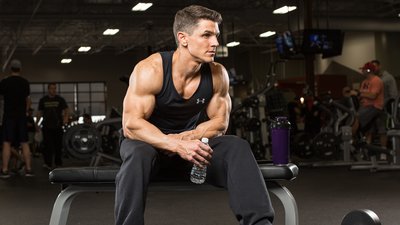


2-4 minutes of rest for strength trainingĢ-4 minutes of rest is generally recommended between sets when doing strength training.Keep in mind though that these can vary slightly in different research papers. The rest time in between sets listed down below can be used as a solid general guideline. The goal is allowing your muscles ample time to recover in order to get them ready to engage in physical activity again. The main purpose of rest time is implied in the name itself. We must realize that there’s not 1 best rest time between sets. The answer to the question “how much rest time in between sets” depends on the loads you are lifting (heavy vs light weights) and the goal of your training (strength, mass, …) A low frequency training program is the opposite. The training frequency refers to how many times you train one particular muscle group each weekĪ high frequency training program usually features a lower amount of reps and sets to balance out the high training frequency. Low volume workouts involve a low amount of reps and a low amount of sets. High volume workouts mostly involve a moderate to high amount of reps and a high amount of sets. Training volume refers to the amount of reps and sets being performed during one particular workout

Low intensity workouts involve a high amount of reps and a high amount of sets. High intensity workouts generally involve a low amount of reps for a low amount of sets. Training intensity refers to the percentage of your 1 rep max you are lifting (high vs low load) These 3 things are training intensity (high vs low load), the training volume (how many reps and sets) and the training frequency. The muscle fibers in these higher rep ranges become more resistant to fatigue, meaning they can last longer without getting tired. Yet, most papers conclude that low loads for a high amount of reps is best to increase muscular endurance. Largely, 12 reps and more is considered endurance based training, although again, this might vary on the articles or research papers. Endurance training is performed by lifting light loads for a high amount of reps.So the eccentric part of a weightlifting exercise should be performed slower. The longer the muscle stays under tension (lifting slower) the more muscle mass is gained. Time under tension is also very important for gaining muscle mass. Although there’s a bit of discussion, and rep ranges might vary slightly depending on the article and the training subjects. The hypertrophy rep range is typically 8-12 reps is mainly where the most gains in muscle mass occurs. Research shows that a higher amount of volume with moderate weight is best for increasing muscle mass. Mass (hypertrophy) training is performed by lifting moderate loads for a moderate amount of reps.People who train primarily for strength are called powerlifters in the weightlifting community. The best rep range for strength is generally between 1-5 reps. Research shows that lifting high loads for a low amount of reps will induce the most strength gains. Strength training is performed by lifting heavy loads for a low amounts of reps.However, the following rep ranges can be used as a solid general guideline. So knowing your body and a bit of experimenting within the different rep ranges is advised for the best results for each individual. While both rep ranges are different, I’d like to note that both rep ranges are still in the advised amount of rep ranges for strength. For example, 5 reps might work best for me to induce strength gains while for you, it might be 3 reps. There is no “fixed” single best rep range that suits every individual, since everyone’s body responds a bit different to stimulus (in this case, the stimulus is weightlifting). Other area’s for which you don’t specifically train will improve a bit as well. You can’t train strictly for strength, muscle mass or muscular endurance. That is, if you eat enough calories and protein. But it will also build a fair bit of muscle mass. What I mean with this statement is that the rep range of 5 repetitions for example will mostly build muscular strength. The best rep ranges will vary depending on if your goal is increasing strength, muscle building (hypertrophy) or building muscular endurance.Īlthough there is a bit of overlap between these 3 rep ranges. The rep ranges you ideally use depends on your goal. In reality, there are a lot more rep ranges than just those 3. There are mainly 3 rep ranges being used in weightlifting.


 0 kommentar(er)
0 kommentar(er)
